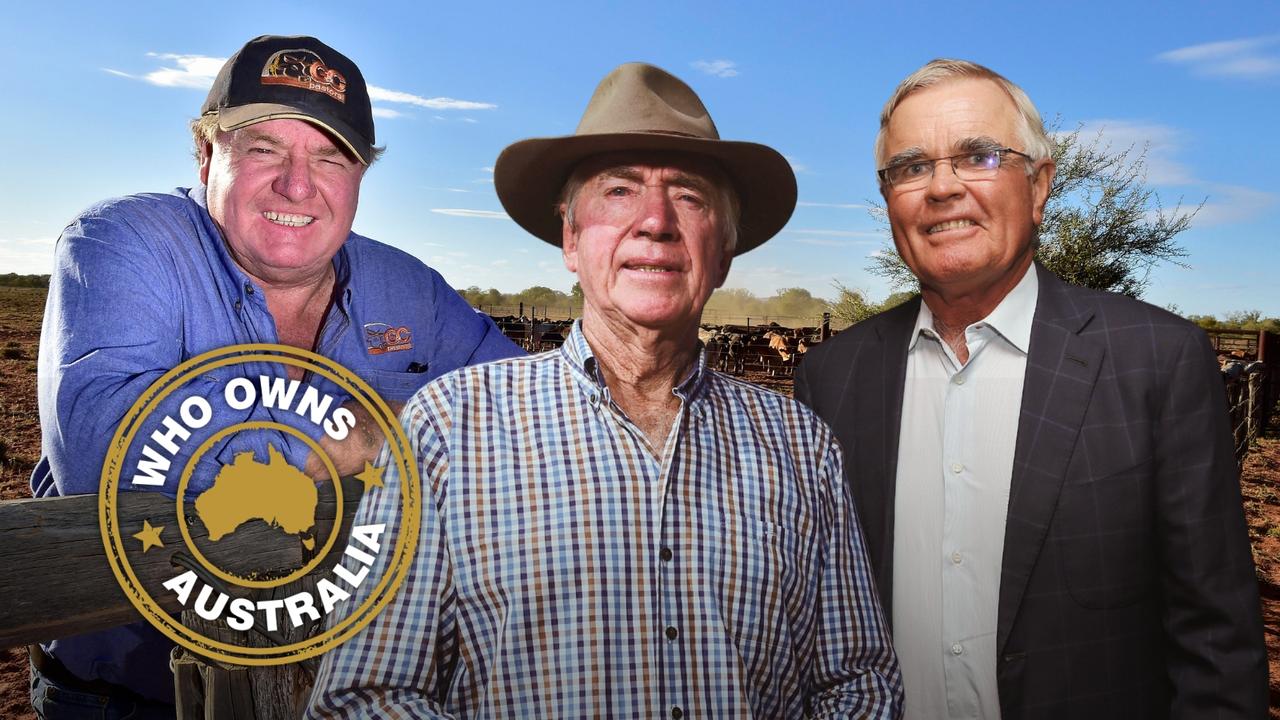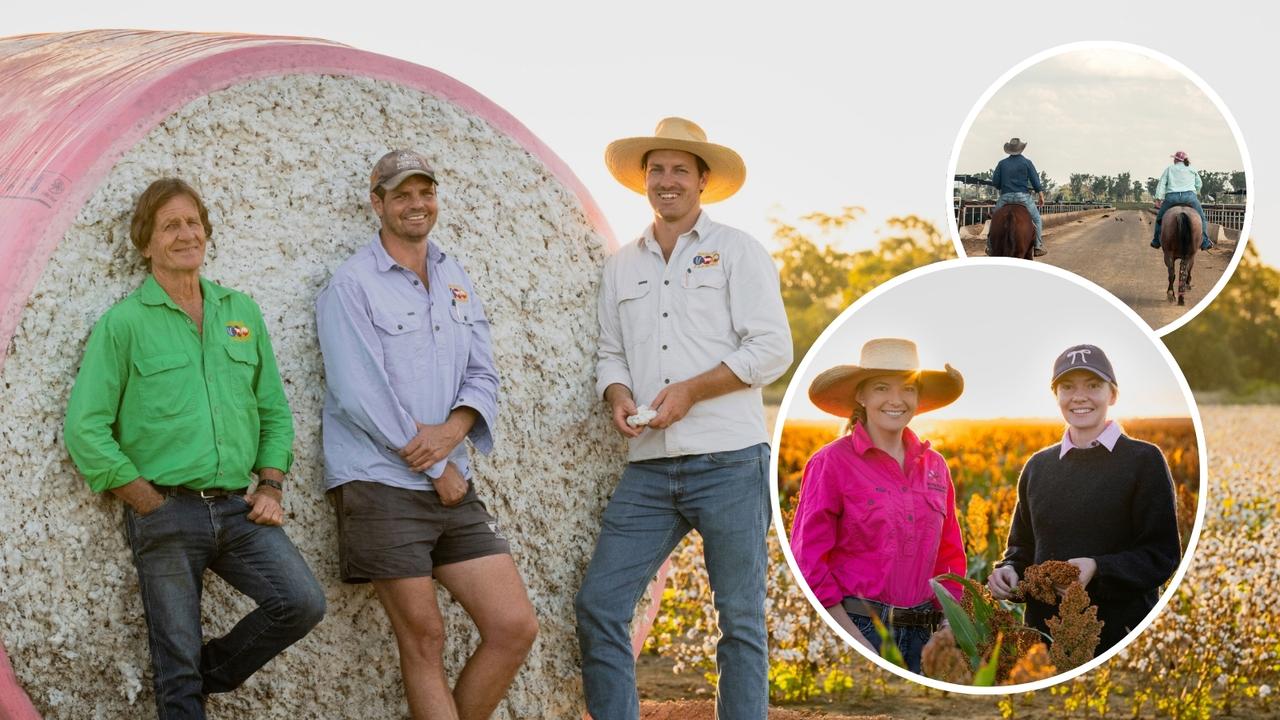Foreign investment: Who owns largest slices of Australian farmland
Foreign investors from across the globe are snapping up Australian farms. Our investigation looks at who the top investors are and which properties they have been buying up.
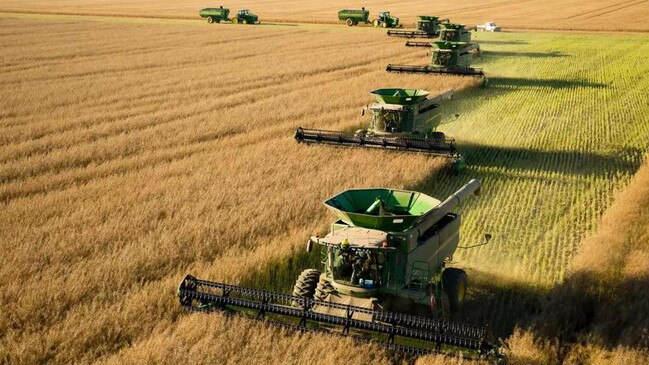
WHEN it comes to foreign investment in Australia, China might be winning the race for space but it’s Uncle Sam and his mates dishing out the dollars.
An AgJournal investigation of foreign-owned farmland has found that while China and the UK are key investors in vast pastoral regions of Northern Australia, the US and Canada are muscling their way into the more productive farmland of the south.
The investigation identified the NSW Riverina, the Golden Triangle of northern NSW and southern Queensland, southwest Western Australia and western Victoria – in addition to Northern Australia – as the destinations for major offshore capital in recent years, accounting for a whopping 24.5 million hectares of land.
The biggest foreign footprint is, predictably, in Northern Australia with 23 million hectares spread across the top end of Queensland, the Northern Territory and Western Australia either fully or partly overseas-owned.
About 542,300 hectares of southwest Western Australia, in a line from Geraldton to Esperance, is foreign backed, with strong overseas showings in the Riverina (524,600 hectares), the Golden Triangle and southern Queensland (281,500 hectares) and southwest Victoria and South Australia’s South East (50,000 hectares).
Australian-based funds containing capital from various overseas countries account for 46 per cent of the foreign-owned land, with China the biggest direct investor at 20 per cent, followed by the UK (10 per cent), Singapore (8 per cent) and South Africa (4 per cent).
While China has sizeable investment in northern pastoral holdings, the investigation shows North America coming into its own in more productive farmland areas.
In the rich cropping districts between Narrabri in northern NSW and St George in southern Queensland, 110,815 hectares, or 40 per cent of foreign-backed land, is owned by US interests, 80,718 hectares (29 per cent) by China and 34,943 hectares (12 per cent) by Canada.
In the Riverina, where there is a large footprint of foreign ownership spanning more than 300,000 hectares, the US owns almost 85,000 hectares (16 per cent), ahead of Canada (53,800 hectares or 10 per cent) and the UK (50,200 hectares or 10 per cent).
The US is also a leader in southwest Western Australia, with more than 126,400 hectares accounting for 23 per share of foreign-owned land, ahead of China (51,840 hectares or 10 per cent) and Canada (37,430 hectares or 7 per cent). Saudi Arabia accounts for about 210,000 hectares across just two portfolios.
CBRE agribusiness director Shane McIntyre says overseas pension funds and private investors are seeking versatile soil types with reliable rainfall, and a consistent history of production.
Australia’s three biggest investors in Australian agriculture – Public Sector Pension Investment Board (PSP Investments), Macquarie Agriculture and TIAA-CREF/Nuveen – all operate with some level of foreign investment. Combined, the three companies have more than $7.5 billion in Australian agricultural assets under management. “Whilst large scale is the preference there is also a willingness to aggregate, to meet the required rates of return,” McIntyre says.
“Investors and funds alike are looking for consistent capital appreciation and reliable annual returns. The current exchange rate remains favourable with appreciation of rural land at an all-time high. Alternative asset classes are not likely to produce the required rate of return in the medium term.”
According to the Federal Government, about 52.1 million hectares of Australian farming land had some level of foreign investment in 2018-19 – or about 13 per cent of total Australian farmland.
MORE AGJOURNAL
WHY AUSSIE FARMS ARE STRONG INVESTMENTS
BEHIND AUSTRALIA’S CONTINUAL DAIRY-INDUSTRY CRISIS
AGRICULTURE SHIELDED FROM THE BRUNT OF CORONAVIRUS
That represents a drop from 52.6 million hectares in 2017-18 but up from 50.5 million hectares in 2016-17.
The biggest investors in leasehold land were China (8.3 million hectares), the UK (8.1 million hectares), the Bahamas (2.2 million hectares), Germany (1.9 million hectares) and Switzerland (1.8 million hectares). On a freehold basis, the Netherlands occupied 1.7 million hectares, followed by the US (1.2 million hectares), the UK (908,000 hectares), China (840,000 hectares) and Saudi Arabia (496,000 hectares).
The Government says the biggest level of foreign investment was in the Northern Territory, accounting for almost 28 per cent of farmland. Tasmania accounted for 25 per cent, although the figures in this state are skewed by including forestry.
In Western Australia, about 18 per cent of farmland had foreign investment ahead of Queensland (11 per cent), South Australia (10.6 per cent), Victoria (6 per cent) and NSW and the ACT (5 per cent).
On a property basis, NSW had the biggest number with 2386 foreign-owned properties – a 7.8 increase on 2017-18 – followed by Victoria (1938), Queensland (1543) and Western Australia (1394).
Livestock was the biggest sector for investment, accounting for 44.6 million hectares, ahead of crops (1.78 million hectares), horticulture (302,000 hectares) and other farming (140,000 hectares).
McIntyre says overseas investors have high respect for Australian primary producers who were “best in class” with farming technologies.
“They have an acute awareness of world trends in agriculture and future needs of world populations, which is expected to exceed 10 billion by 2050,” he says. “The rigid charter of these funds demands that decisions are measured and fully researched.
“Australia is a safe, consistent, reliable, and a productive destination for rural investment that will continue over the coming decades.”
OF THE 10 biggest investors in Australian farmland from a value perspective, nine operate with some form of foreign capital.
The biggest investor, the Public Sector Pension Investment Board – which manages the superannuation funds of Canada’s public service, armed forces and the 30,000 member-strong Royal Canadian Mounted Police – has more than $3 billion of assets under management and has led the North American charge for Australian farmland in recent years. In the past 12 months alone, PSP Investments has been involved in more than $2 billion worth of property and water purchases including two of the biggest transactions in Australian agriculture history.
In February it finalised its $854 million takeover of the ASX-listed Webster Limited – Australia’s fourth-oldest company and one of the nation’s biggest landholders with more than 340,000 hectares and 153,000 megalitres of water. Late last year it paid about $850 million for 12,000 hectares of almond plantations near Robinvale in northern Victoria and almost 90,000 megalitres of high-security water.
Both sales came just months after PSP Investments teamed up with Australian Food and Fibre to purchase cotton giant Auscott’s Midkin vertically integrated aggregation near Moree in northern NSW for an estimated $300 million.
In February this year, its Daybreak Cropping business paid a whopping $97 million for the 22,000-hectare Erregulla Plains property at Mingenew in Western Australia. Next month it will finalise its $40.4 million purchase of four dairy farms at Mt Gambier in South Australia through its Aurora Dairies arm.
The second-biggest investor in Australian farmland, Macquarie Agriculture, which oversees a portfolio of 4.7 million hectares, running 220,000 cattle, 250,000 sheep and producing a huge variety of irrigated and dryland crops, has investments valued at $2.7 billion. The Macquarie funds include capital from the Netherlands, Germany, Canada, Korea and Japan. Dutch pension fund Stichting Pensioenfonds ABP accounts for just under half of its Paraway Pastoral fund.
At No. 3, the New York-based TIAA-CREF, the biggest investor in agriculture globally, owns a whopping 286,000 hectares of mostly cropping country, spread across 71 properties and aggregations, with land and water assets valued north of $1.7 billion.
Other major farmland investors relying on foreign capital include Rural Funds Group ($950 million in assets), billionaire Gina Rinehart ($700-$800 million), Australian Agricultural Company ($738 million), North Australian Pastoral Company ($650 million-plus), UK-owned Consolidated Pastoral Company ($600 million-plus) and US-based Hancock Agricultural Investment Group ($600 million-plus).
Of Australia’s top 20 landholders by size, seven are foreign or partly foreign backed – Gina Rinehart (No. 1 – 9.7 million hectares), Australian Agricultural Company (No. 2 – seven million hectares), North Australian Pastoral Company (No. 3 – 6.1 million hectares), Macquarie Agriculture (No. 6 – 4.7 million hectares), Consolidated Pastoral Company (No. 10 – 3.2 million hectares), Brett Blundy Retail Capital (No. 13 – 2.37 million hectares) and Public Sector Pension Investment Board (No. 20 – 1.3 million hectares-plus).
FOREIGN CORRESPONDENT
CANADA has led the charge when it comes to foreign investment in Australian farmland and water assets in the past year.
An analysis of 20 major transactions since the start of the 2019-20 financial year worth almost $3 billion shows Canada – and in particular the Public Sector Pension Investment Board’s PSP Investments – streaks ahead of other nations in terms of outlay.
Of the $2.9 billion in transactions, Canada accounted for more than $2.1 billion. This included two of the biggest transactions in Australian agriculture history with the $860 million purchase of 12,000 hectares of almonds, and 90,000 megalitres of high-security water, at Robinvale in northern Victoria and its $854 million takeover of Australia’s fourth-oldest company, Webster Limited.
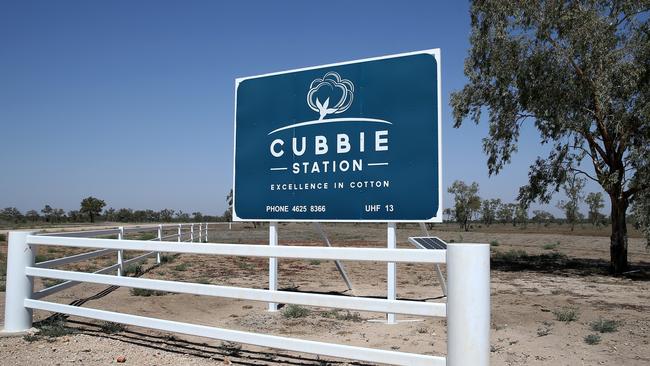
MAJOR SALES INVOLVING OVERSEAS INTERESTS IN 2019-20
CANADA
$860 MILLION DECEMBER 2019
PSP Investments
purchased 12,000 hectares of almond plantations near Robinvale in northern Victoria and almost 90,000 megalitres of high-security water. The water component of the deal was worth $490 million.
CANADA
$854 MILLION FEBRUARY 2020
PSP Investments bought
the ASX-listed Webster Limited – Australia’s fourth-oldest company and one of the nation’s biggest landholders with more than 340,000 hectares and 153,000 megalitres of water.
CANADA
$300 MILLION
SEPTEMBER 2019
PSP Investments purchased the Robinson family’s Australian Food and Fibre, of US cotton giant Auscott’s Midkin vertically integrated aggregation near Moree in northern NSW.
VARIOUS
$200 MILLION
AUGUST 2019
Macquarie Agriculture purchased a 49 per cent stake in the 93,000-hectare Cubbie Station at Dirranbandi, Queensland from Chinese company Shandong Ruyi, which retained a 51 per cent holding.
UNITED STATES
$120 MILLION
JANUARY 2020
Boston-based Hancock Agricultural Investment Group for the 19,877-hectare Wyadra and Cowl Cowl properties in southern NSW, from Harvard University’s endowment fund.
CANADA
$97 MILLION
FEBRUARY 2020
Daybreak Cropping, owned by Canada’s PSP Investments, purchased the 22,000-hectare Erregulla Plains property at Mingenew in Western Australia.
VARIOUS
$90 MILLION
DECEMBER 2019
Macquarie Agriculture’s Viridis Ag purchased three properties totalling more than 15,000 hectares in the Golden Triangle region of northern NSW.
SOUTH AFRICA
$70 MILLION
JANUARY 2020
The Langenhoven family of Rallen Australia purchased the 559,370-hectare Tanumbirini and Forest Hill stations near Katherine in the Northern Territory.
BELGIUM
$60 MILLION
OCTOBER 2019
Sugar producer Finasucre purchased the 1018-hectare Winfield Rd macadamia aggregation near Bundaberg in Queensland from Hancock Agricultural Group.
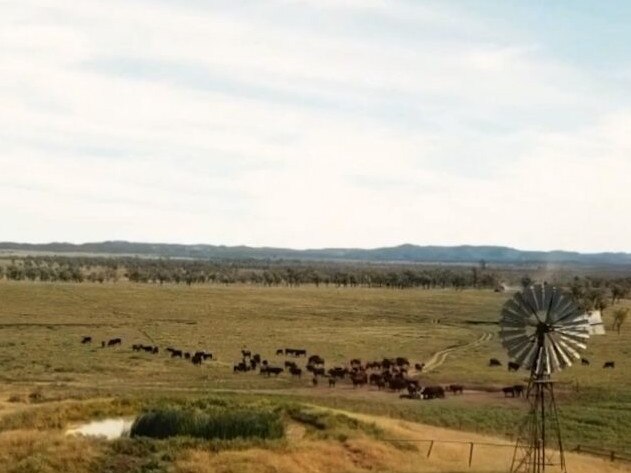
VARIOUS
$60 MILLION
JANUARY 2020
North Australian Pastoral Company purchased the 134,000-hectare Mantuan Downs Station near Springsure in Queensland. NAPCO is partly owned by the Queensland Investment Corporation, which includes a smaller percentage of foreign funds.
CANADA
$40.4 MILLION
JUNE 2020
PSP Investments, through its Aurora Dairies entity, purchased four dairy farms at Mt Gambier in South Australia from Beston Global Food Company.
ARGENTINA
$30 MILLION
DECEMBER 2019
Markus Kahlbetzer of BridgeLane Group purchased the 4200-hectare Bundarbo Station near Jugiong NSW.
NEW ZEALAND
$30 MILLION
FEBRUARY 2020
The Queensland-based Palgrove beef operation, backed by the New Zealand Superannuation Fund, purchased the 3618-hectare Gilgal property near Cootamundra in NSW.
UNITED STATES
$28.4 MILLION
NOVEMBER 2019
New York-based TIAA-CREF purchased 4000 hectares of dryland cropping country near Moree NSW.
CHINA
$25 MILLION
MARCH 2020
China wool buyer Tianyu Wool purchased the 2349-hectare Mawallok property near Ballarat in Victoria.
VARIOUS
$22.6 MILLION
APRIL 2020
ASX-listed Rural Funds Group purchased the Petro, High Hill and Willara properties north of Perth in Western Australia.
CHINA
$20 MILLION
SEPTEMBER 2019
Australian Fresh Milk Holdings – which includes Chinese money – purchased the 2051-hectare Torrumbarry Estate, west of Echuca in Victoria.
UNKNOWN
$10 MILLION
NOVEMBER 2019
Offshore investor-backed fund purchased the 4390-hectare Kulwin Park property at Wycheproof in Victoria from Rifa Salutary (China).
ARGENTINA
$6.8 MILLION
NOVEMBER 2019
The Buratovich family from Argentina purchased the 67,840-hectare Sturt Downs property near Katherine in the Northern Territory.

